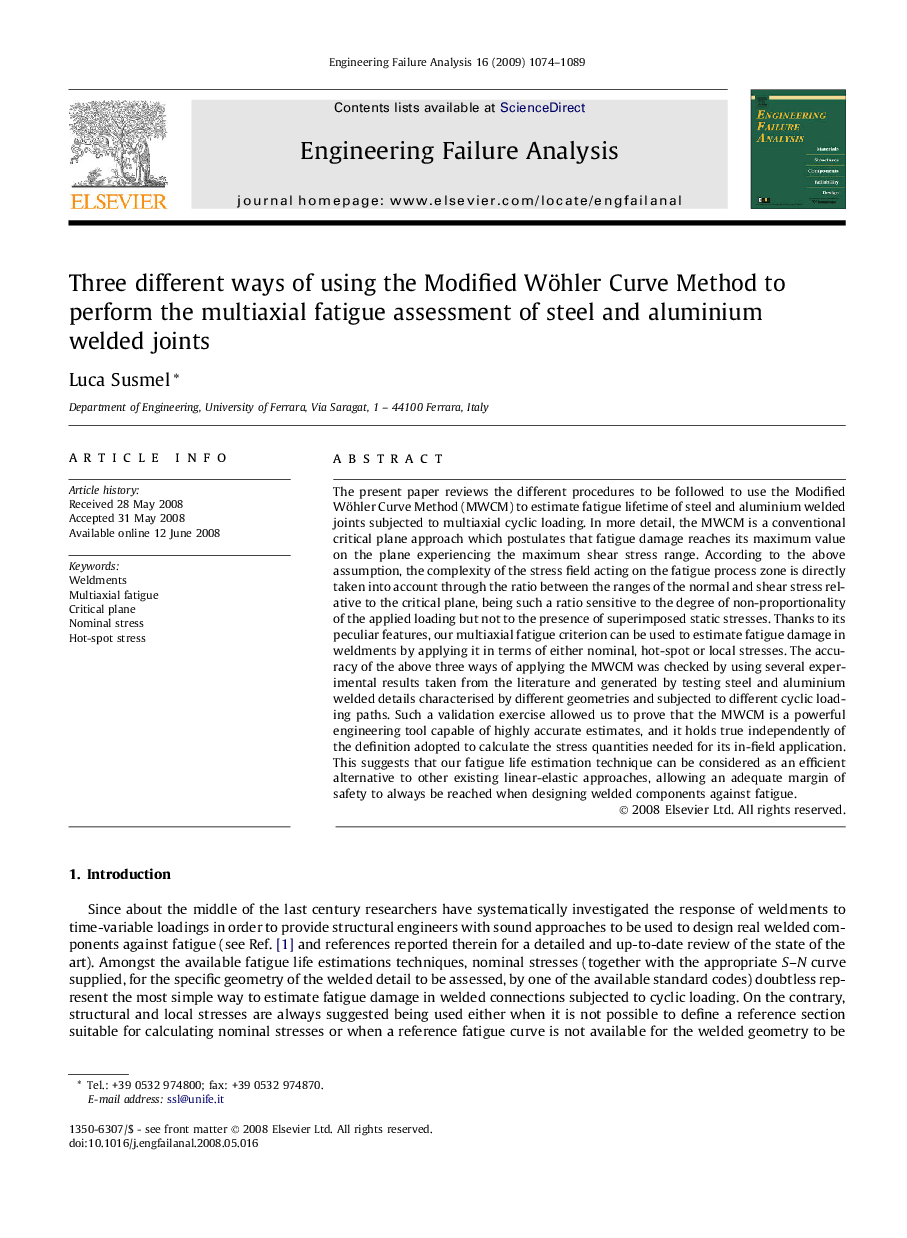| Article ID | Journal | Published Year | Pages | File Type |
|---|---|---|---|---|
| 769919 | Engineering Failure Analysis | 2009 | 16 Pages |
The present paper reviews the different procedures to be followed to use the Modified Wöhler Curve Method (MWCM) to estimate fatigue lifetime of steel and aluminium welded joints subjected to multiaxial cyclic loading. In more detail, the MWCM is a conventional critical plane approach which postulates that fatigue damage reaches its maximum value on the plane experiencing the maximum shear stress range. According to the above assumption, the complexity of the stress field acting on the fatigue process zone is directly taken into account through the ratio between the ranges of the normal and shear stress relative to the critical plane, being such a ratio sensitive to the degree of non-proportionality of the applied loading but not to the presence of superimposed static stresses. Thanks to its peculiar features, our multiaxial fatigue criterion can be used to estimate fatigue damage in weldments by applying it in terms of either nominal, hot-spot or local stresses. The accuracy of the above three ways of applying the MWCM was checked by using several experimental results taken from the literature and generated by testing steel and aluminium welded details characterised by different geometries and subjected to different cyclic loading paths. Such a validation exercise allowed us to prove that the MWCM is a powerful engineering tool capable of highly accurate estimates, and it holds true independently of the definition adopted to calculate the stress quantities needed for its in-field application. This suggests that our fatigue life estimation technique can be considered as an efficient alternative to other existing linear-elastic approaches, allowing an adequate margin of safety to always be reached when designing welded components against fatigue.
